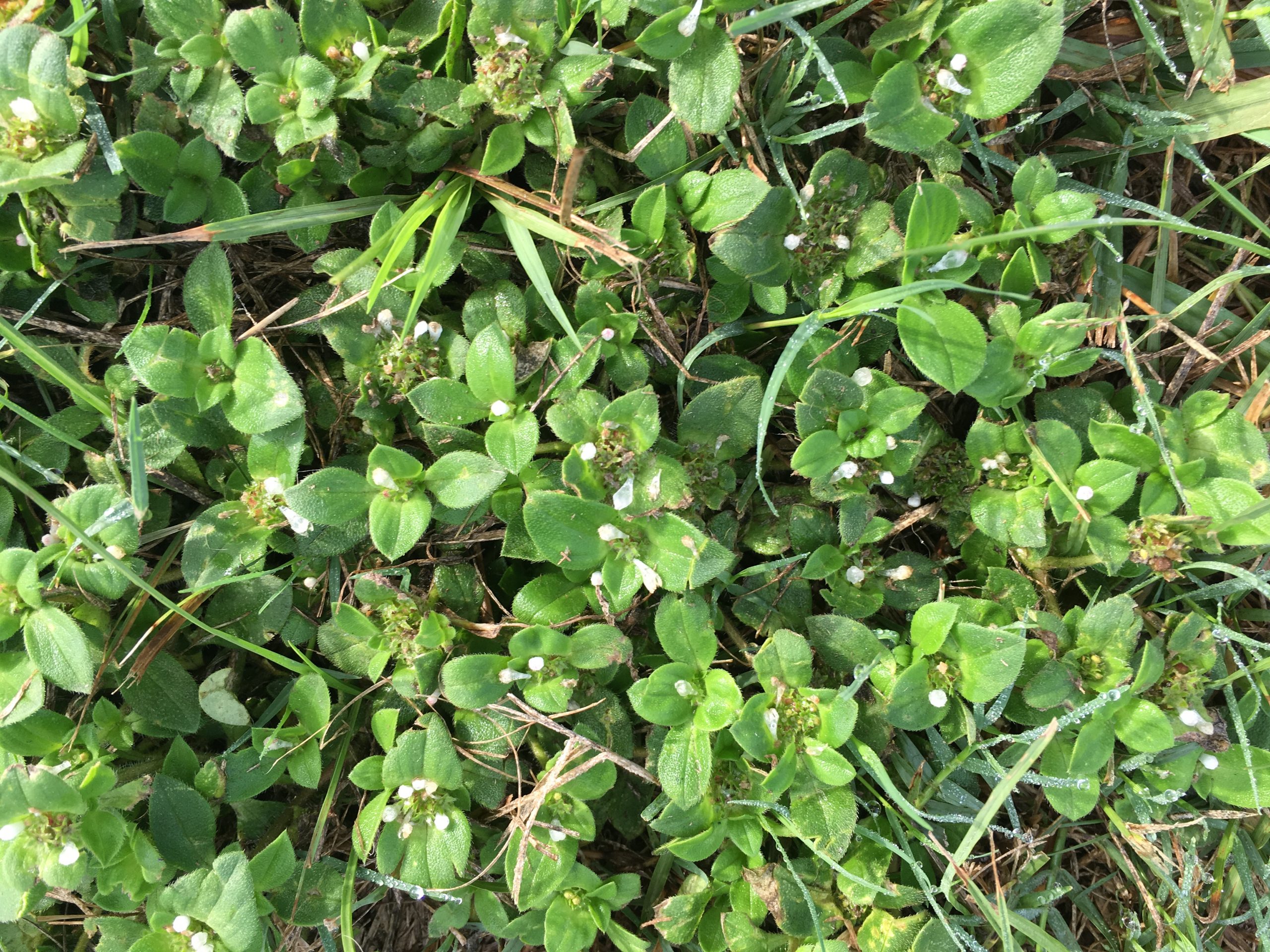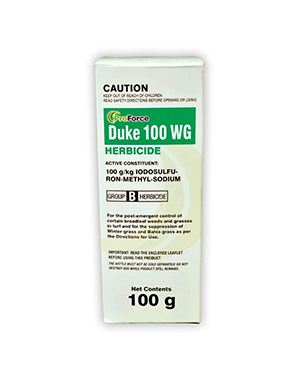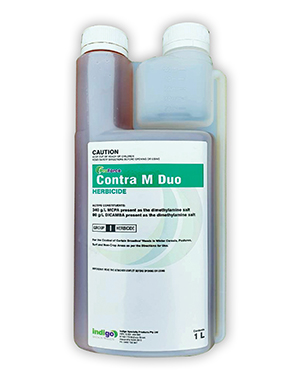What are Perennial Weeds?
Perennial Weeds are longer lived plants that can survive winter or regrow from roots, rhizomes or tubers in spring after a period of dormancy. Many weeds that grow from seed ...

 There are several types of Chickweed, a common herbaceous plant, that prefers cool, damp shady sites and can quickly take hold in your lawn during winter.
There are several types of Chickweed, a common herbaceous plant, that prefers cool, damp shady sites and can quickly take hold in your lawn during winter.
Mouse-ear Chickweed (Cerastium glomeratum) is an annual weed also known as Clammy Chickweed, Sticky Chickweed and Sticky Mouse-ear. It has soft hairy stems and small sticky hairy leaves paired along the stems.
Mouse-ear Chickweed flowers are small, white and grouped in dense clusters at the top of the stem, with five petals that may appear to be 10 petals. It produces small fruit (5-10mm long) with what looks like 10 teeth at the tip.
In this article, we’ll address ways to remove and control Common Chickweed (Stellaria media) in your lawn.
Also known as Winter Weed, Starweed and Chickenwort, Common Chickweed has a line of hairs along one side of the stem and simple, mostly hairless leaves.
Common Chickweed also produces a single flower on each stem which also has five white petals that are deeply lobed.
Interestingly, Common Chickweed stems, flowers, leaves and seeds are edible and can be eaten raw or cooked and is also sold dried, as tea, and used in herbal remedies.
Chickweed is a sprawling weed of lawns, gardens, footpaths, farms and disturbed sites.
It has shallow fibrous roots, can flower quickly in infertile soils – as soon as four to five weeks after germination – and each Common Chickweed flower is replaced by a cylindrical seed capsule. This can produce mature seeds within five to seven weeks of the plant germinating.
Common Chickweed spreads by reseeding itself; it can also spread vegetatively by rooting at the leaf nodes along the stems.
The Common Chickweed seeds can be dispersed by wind, water, vehicles and mud.
There are several methods of Common Chickweed control, so choose the one that best suits your situation.
Small individual Common Chickweed plants can easily be dug out using a sharp spade but be sure to leave a generous margin around the plant and under the roots. This is best done before the Common Chickweed flowers to avoid accidentally scattering seeds.
If the Common Chickweed has grown into a large, dense mat, more drastic action might be needed. This can include removal of the plants by hand – they’ll break off easily enough – followed by cultivation to ensure the roots and any leftover stems and seeds are well buried.
Common Chickweed seeds rarely germinate from depths of 20mm or more.
Common Chickweed doesn’t recover from the loss of its foliage, so pull up as much as you can by hand before flowering, and regularly mow that section of your lawn at a lower height to allow the grass around its time to recover.
Flame weeding, which involves passing a flame over a weed briefly to heat the plant tissue just enough to kill it, also works well on Common Chickweed. Take care you don’t do too much damage to your surrounding lawn.
Glyphosate can be effective on Common Chickweed, but as a non-selective herbicide, it will poison everything it touches, including your lawn.
Overspray of glyphosate is especially toxic to Kikuyu and Buffalo lawns.
It is safer to use a selective herbicide such as Indigo Duke 100WG 100gm. Duke is a post-emergent liquid herbicide and is safe to use on Kikuyu, Buffalo and Couch grasses. Do not use it on Zoysia grasses. It can be applied using suitable spray equipment.
Another reliable selective herbicide that controls Common Chickweed is Indigo ProForce Contra M 1L, this product can not be used on Buffalo lawns but is suitable for Kikuyu, Zoysia and Couch grasses. Again it can be applied using suitable spray equipment.

myhomeTURF also recommends Indigo Duke, which is a post-emergent liquid herbicide. Always read the safety directions and instructions on the product label before use.
Note: Indigo Duke is not suitable for use on Zoysia grasses.
SHOP NOW
Indigo ProForce Contra M 1L is a reliable, selective liquid herbicide used to control Broad Weeds. Achieves best results when used with product with Wetter 600. Indigo ProForce Contra M CANNOT be used on Buffalo lawns but is suitable for use on Zoysia, Kikuyu and Couch grasses. Always read the safety directions and instructions on the product label before use.
SHOP NOWThin, weak lawns on poorly drained soils are at the greatest risk of infestation by weeds such as Common Chickweed.
Ensuring you have a strong, healthy lawn provides the best defense against a Common Chickweed invasion.
Eliminate wet spots in your lawn and lay geofabric under new garden beds to minimise the risk of Common Chickweed spreading from seeds in soil that’s brought in.